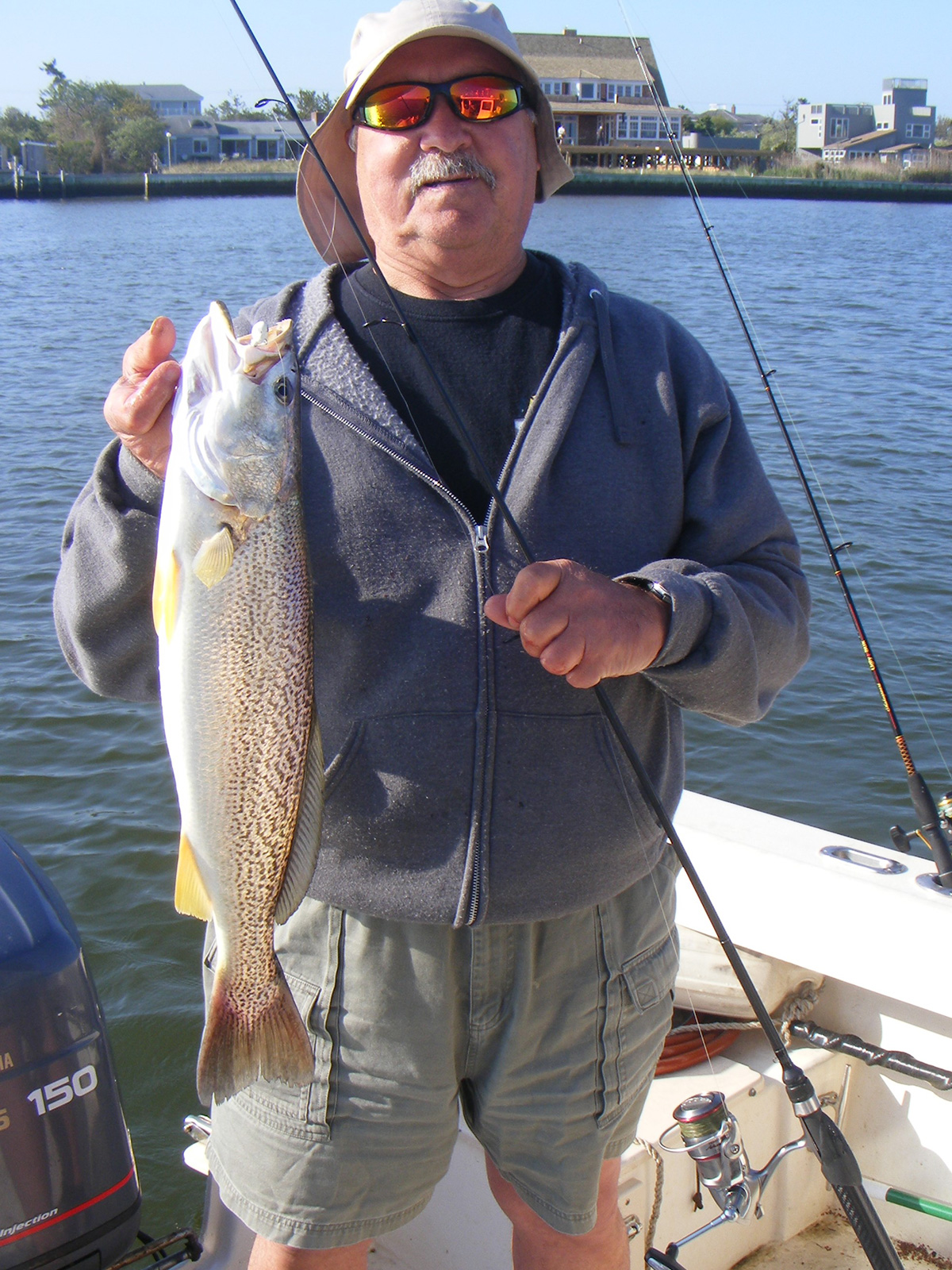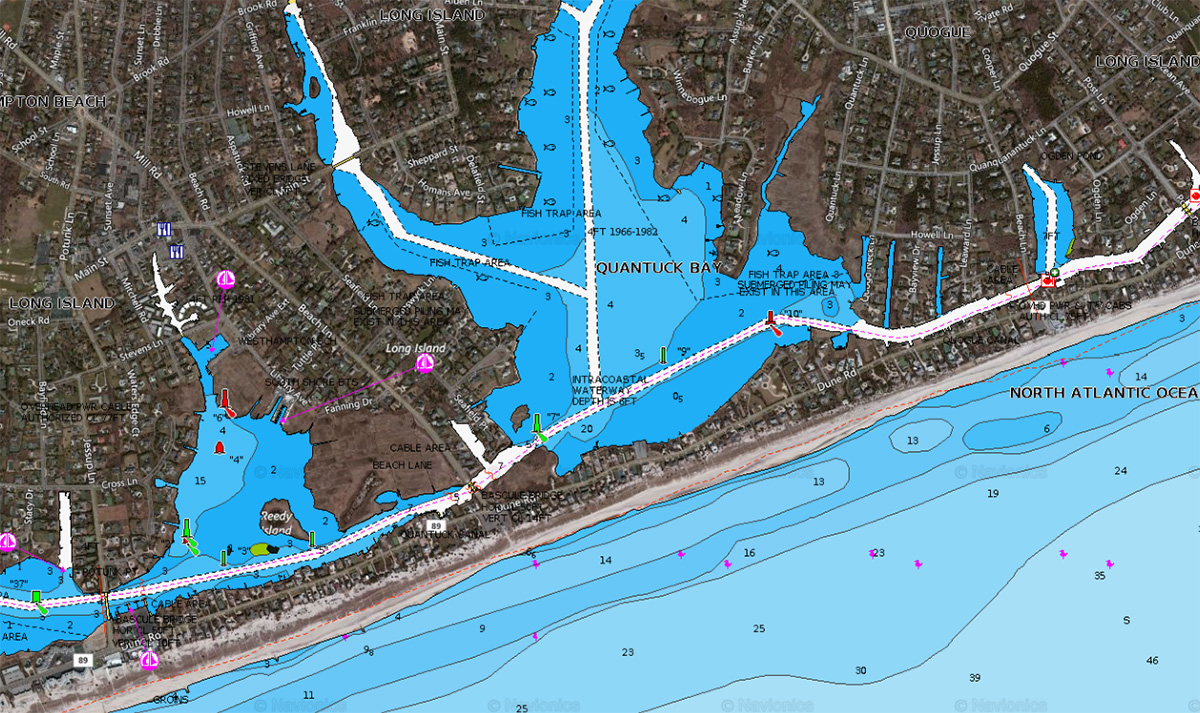
To be quite frank, weakfish have been a crap shoot the past several seasons. In 2014 it was some of the best fishing I’ve seen in 13 years. In 2015, it was back to a grind, and then last year saw encouraging numbers of yellowfins over the course of the season. Part of the dilemma is the fish trying to elude the maze of gill nets strung along our shores and commercial harvest to our south. Regardless, some fish do slip through this exploitation and settle into the shallows of the South Shore bays. This is especially the case inside the Quogue Canal where by the end of April, and through mid-May, weakfish settle into this piece of waterway to spawn and provide anglers with some exciting challenges.
Funneled between the confines of Moriches and Shinnecock bays, the Quogue Canal was once notorious for its exceptional early spring flounder run that began in mid to late February, and usually lasted through the middle of April. Although the flounder fishing isn’t a shadow of days gone by, weakfish have done a decent job of filling in some of the gaps left vacant by flounder. Unlike flounder, mid-February through March is a bit too early for the weakies, however come the third week of April, these fish become a potential target. Count on them to stick around through May and depending on water clarity, they may attack offerings up to the full moon of June. At the time of the June moon, weakfish feeding is minimized as spawning becomes their first priority, which is done primarily along the shallow waters of Moneybogue and Quantuck bays, which is located inside of a nearly 4-mile stretch of waterway fed by small freshwater streams of groundwater originating on the mainland. This area also includes tidal creeks and marshes feeding into Moriches and Shinnecock bays. The ground water feeding into the canal is a solid 57 degrees year round, making it the perfect early spring habitat as the elements consisting mainly of dark muddy bottom, (which is a weakfish favorite) and relative warm water equates to the marshes and creeks holding a substantial amount of forage fish (particularly small grass shrimp and spearing) which draw the attention of both weakfish and fluke by mid-April.
A “Hole” Lot of Spots
The good news is that from their arrival in April until they spawn, weakfish provide good action on fish to 8 pounds, with most of them in the 2- to 4-pound range. After the spawn and as water temperatures rise, much of the forage baitfish have finished spawning themselves and move into the bay, where they are followed by the weakfish. Most of the spring weakfish will eventually find their way into the ocean. While many areas along the canal consist of shallow water, there are many areas of relatively deep-water and countless holes that are prime real estate and hold strong potential for weakies. However to cut to the chase, I’ll steer you through spots that have consistently produced solid weakfish action.
Starting from the Moriches side and working our way east, our first stop is Taylor’s Hole south of buoy 36 and just west of the first (Westhampton) bridge. The hole is approximately 100 yards wide and 30 feet deep and is often overlooked by passing boaters since the hole is not marked on any navigation map. Moving east, the south end of Quantuck Bay sees good action, particularly along the channel just east of the first bridge by poles two and three. I can tell you that there are several holes just east of the first bridge that are south of the channel bordering those multi-million dollar homes. Don’t get too close as the water shallows quickly here. The third area is just past the third bridge and up off the golf course where there are several pockets that hold weakfish.
The fact is the fish are spread through most of the length of the canal. The key is to locate and drift the holes. As you motor through the canal with an eye on the sounder, you can’t avoid not smacking into a hole. Granted not every hole produces, and some produce better than others but you won’t know until you give them a shot. Don’t be afraid to move off the beaten path and seek out areas away from the channel and its accompanying boat traffic. This is true especially just east the first bridge. Navigation through the canal can be tricky, therefore be certain to have a reliable GPS or paper chart to help you maneuver through. Keep in mind that there are many speed zones going through the canal that are strictly and frequently enforced. Shore bound opportunities are extremely limited due to strict and enforced parking restrictions. However there is legal parking just north of the third bridge (Post Lane) where you can park and walk.
Weakfish are aggressive and often feed both day and night. However, let me emphasize that early mornings or days when boat traffic is light, often produce the best results. Just as any other species, boat traffic puts a damper on the action. Therefore, if you are restricted to fishing on the weekends, set that alarm clock an hour or two earlier and get out there before the midmorning rush hour traffic on the bay begins. Otherwise, try to get out during the week or on rainy days when traffic is minimal.
A Current Affair
As for the best tide, both sides of the tide produce as long as there is a steady current. Truth be told, I make my plans to fish this area on the top of the tide as the first couple of hours of the ebb seem to have an edge on most days. My first concern is a drift with a wind with the tide. Currents clash here in the canal as you have influence from both Moriches and Shinnecock inlets. An incoming tide and a west wind give you a steady drift towards the east at the first bridge; an east wind and an incoming tide in the area of the third bridge drifts you west. Perpendicular drifts with winds out of the north or south are fine as long you set your drifts with the current to go over the edges of the drop offs. The first bridge is located in the west end of the canal and the third bridge is at the east end.
Weakfish feed on many types of bait including crustaceans, mollusks and a large array of baitfish. With such a broad diet, weakfish are susceptible to a wide variety of artificial lures and baits. Bucktails, soft body plastics and jigs are a few of the more popular choices. When it comes to soft baits, it’s pretty hard not include Berkley Gulp! baits. Not only are they fluke killers, weakfish have a fondness for them as well, especially the 5-inch Jerk Shads and the 4-inch pink Swimming Mullet. Threaded onto a 1/2- to 1-ounce plain jighead and bounced along the bottom, they are a deadly combination. Last season we gave the Squid Tails from Spro Corporation a try and they also took fish. The lifelike action of the soft plastic squid tail worked well when jigged right along the bottom without the addition of any other dressing.

Light Is Right
Keep the rod tip up, the drag loose and smooth, and a steady retrieve and you’ll consistently bring weakfish to the net. A sticky drag results in a lot of disappointment. Therefore do yourself a favor and bring along a quality spinning combo or two in the 6- to 12-pound class. Line can be either mono or braid. If you opt for braid, tie a 6-foot length of 4-to 10-pound fluorocarbon via an Albright Knot and tie your jigs with the old reliable and still popular improved clinch knot. The combo that I’ve been using the last couple years is a 7-foot KastKing inshore graphite spinning rod model PES701M matched to an Ecooda ERS2500 filled with 10-pound KastKing Super Power braid line. This outfit is sensitive yet powerful enough to handle the spirited fight of weakfish without added stress, which allows for a healthy release. These lightweight rods are designed for jigging and provide better feel and control of a bouncing jig.
How many weakfish will enter the bays this season is anyone’s guess. One thing is for certain, that at the very least you can count on enough weakies to come into Quogue Canal to make the day worthwhile. Remember the bag limit of one fish at 16 inches or better per angler and don’t forget the camera.



